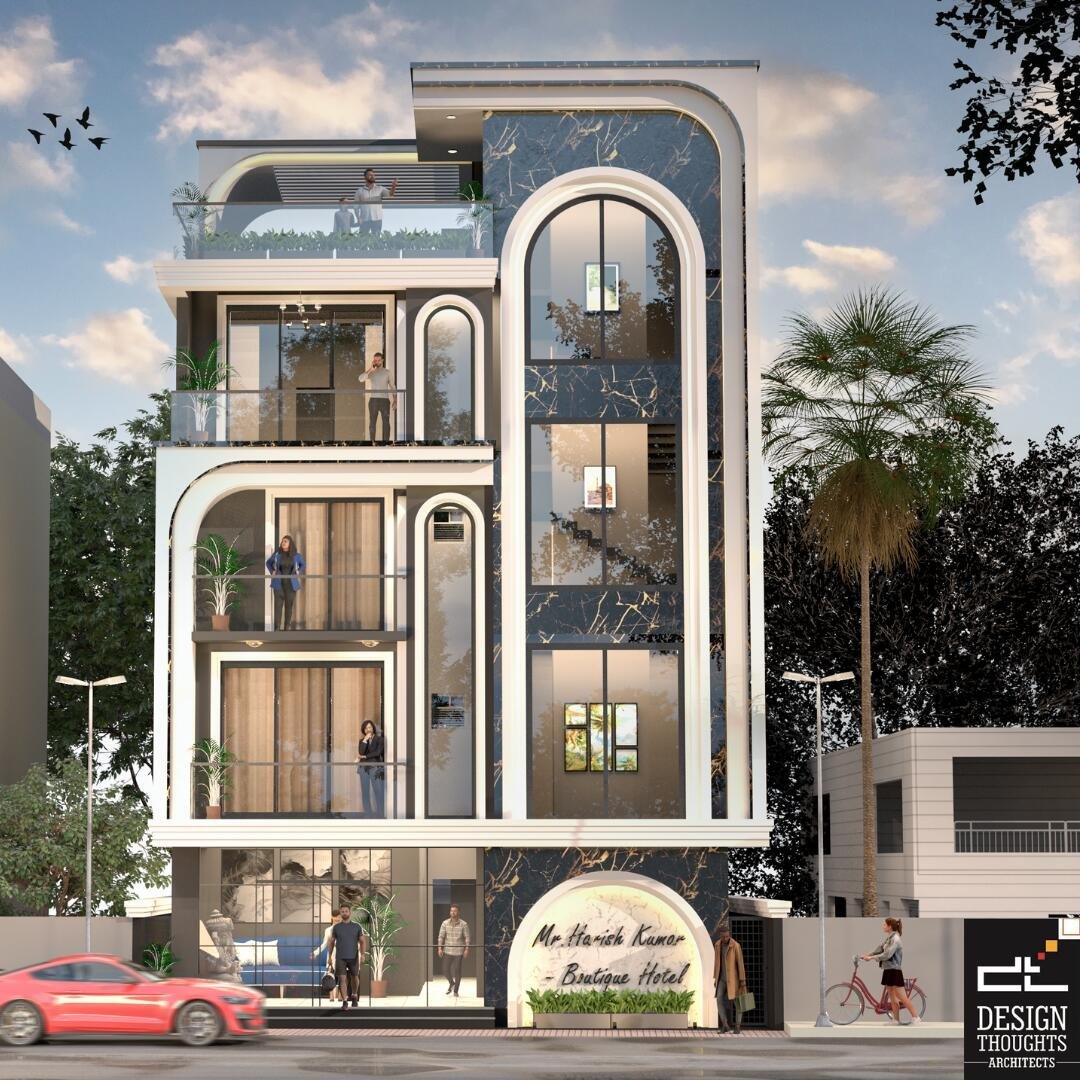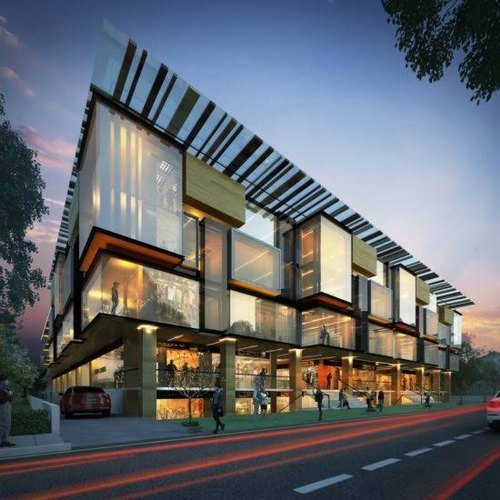Discover the Innovative Solutions Offered by Commercial Architects for Your Following Job
Commercial architects play a crucial duty in shaping the developed atmosphere. They mix performance with aesthetic allure, developing spaces that resonate with brand identity. These professionals use cutting-edge layout remedies, sustainable practices, and progressed technologies to boost customer experiences. Their collective approach warranties positioning with client visions and operational demands. The degree of their solutions frequently prolongs past style. The next action in recognizing how these architects navigate complicated job needs may shock you.
Understanding the Function of Commercial Architects
Although the duty of commercial architects may vary relying on the certain task, their main function focuses on developing functional and cosmetically attractive areas for services. These specialists are tasked with understanding the one-of-a-kind needs of each client, whether it be a retail shop, workplace structure, or commercial center. They perform extensive site analyses and team up with stakeholders to guarantee that the design lines up with business objectives and brand name identity.Commercial architects additionally navigate numerous regulatory demands, securing conformity with zoning laws and building codes. Their expertise encompasses creating lasting styles that advertise power effectiveness and environmental responsibility. In addition, they take care of the project's timeline and spending plan, coordinating with professionals and engineers throughout the building process. By blending imagination with technical knowledge, business architects play a crucial duty in changing theoretical concepts right into tangible facts, ultimately improving the functionality and allure of industrial rooms.
Cutting-edge Design Solutions for Distinct Spaces
As business rooms significantly require distinctiveness to stand out in competitive markets, cutting-edge design remedies have actually become crucial for architects. These experts take advantage of their creative thinking and technological expertise to craft unique environments that mirror brand identification and improve individual experience. By integrating sophisticated technology and materials, commercial architects can transform normal rooms right into enchanting locations that engage clients and influence employees.Architects employ various strategies, such as flexible reuse, which renews existing frameworks while maintaining their historical relevance. They likewise discover unique designs and multifunctional areas that satisfy varied requirements, making sure versatility for future growth.Furthermore, the incorporation of biophilic layout-- bringing nature indoors-- produces welcoming atmospheres that advertise health - commercial architects. This attention to detail in cutting-edge design not only addresses visual concerns yet likewise cultivates neighborhood and cooperation. Ultimately, these tailored remedies allow businesses to thrive in an ever-evolving landscape, establishing them besides rivals
Sustainable Design Practices
Sustainable design methods have arised as a pivotal emphasis for industrial architects seeking to produce impactful layouts that resonate with environmental stewardship. These techniques prioritize making use of renewable energies, energy performance, and marginal waste, mirroring a dedication to decreasing the ecological impact of buildings. Architects incorporate materials that are sustainably sourced or reused, ensuring that construction techniques straighten with eco-friendly principles.Furthermore, the integration of green roof coverings and wall surfaces boosts biodiversity while boosting energy performance. Efficient water administration systems, such as rain harvesting, contribute to sustainability by preserving water resources. All-natural ventilation and daylighting approaches are additionally utilized to enhance indoor atmospheres, lowering dependence on man-made home heating and illumination.
Integrating Modern Technology in Architectural Designs
An increasing variety of commercial architects are embracing innovation as a transformative element in building layout. By leveraging sophisticated software program devices such as Building Info Modeling (BIM), architects can develop in-depth 3D representations of tasks, enabling for improved visualization and collaboration among stakeholders. This modern technology assists in real-time changes, reducing errors and enhancing the style process.Additionally, architects are integrating smart structure technologies into their styles, which boost energy efficiency and passenger comfort. Attributes such as automated illumination, climate control, and safety systems can be effortlessly included, advertising lasting techniques and lowering functional costs.The use of virtual and enhanced truth also allows customers to experience designs prior to construction begins, supplying indispensable understandings into spatial relationships and visual choices. Inevitably, the combination of technology in architectural layouts not just promotes innovation but likewise assures that projects are executed with precision and straightened with modern needs.

Job Monitoring and Control Providers
Reliable task management and sychronisation solutions are vital for the effective execution of industrial building projects. These services assure that all facets of a task, from first Homepage design to last building and construction, are flawlessly incorporated. Commercial architects play a significant role in coordinating between different stakeholders, consisting of customers, professionals, and vendors, to preserve clear communication and placement on job goals.By executing structured methods, architects can manage timelines, budgets, and sources efficiently, lessening hold-ups and cost overruns. They use task monitoring software and devices to track progression, take care of paperwork, and assist in partnership amongst group members.Additionally, these services consist of risk evaluation and mitigation strategies, confirming potential difficulties are identified and addressed proactively. The outcome is a structured process that boosts overall job performance and top quality, eventually leading to a successful result that fulfills the customer's vision and expectations.
Regulatory Compliance and Zoning Support
Effective governing conformity and zoning aid are crucial for the success of any type of industrial project. Architects need to possess a deep understanding of neighborhood policies and zoning legislations to assist clients through the intricacies of the authorization procedure. This experience not just guarantees adherence to lawful requirements but additionally helps maximize job style and performance.
Browsing Local Laws
Exactly how can commercial architects ensure their layouts align with regional regulations? By staying knowledgeable regarding the ever-evolving landscape of building codes commercial architects and local ordinances, architects play an essential function in guaranteeing conformity. They conduct extensive research to recognize the specific laws governing products, safety and security criteria, and building and construction techniques suitable to every task. Collaborating carefully with regional authorities, commercial architects can navigate through the intricacies of regulative structures effectively. They additionally facilitate required permits and evaluations, enhancing the approval process. This proactive approach not just mitigates prospective legal issues yet also improves project performance. Eventually, their competence in navigating regional regulations equips clients to realize their vision while sticking to all called for standards and guidelines.
Zoning Legislation Know-how
Zoning regulation know-how is vital for business architects steering with the intricacies of land use policies. These architects have thorough knowledge of local zoning codes, which govern building development, land use, and structure specifications. By understanding these guidelines, they help customers navigate the typically complex authorization procedures needed for building tasks. Their experience warranties conformity with zoning laws, lessening the threat of task delays or legal complications.Additionally, commercial architects give important support in acquiring needed licenses and differences, assisting in smoother interactions with neighborhood authorities. They additionally provide strategic suggestions to maximize website layout and take full advantage of the potential of a building while sticking to zoning restrictions. Inevitably, their zoning legislation proficiency plays a pivotal role in the effective understanding of industrial jobs.
Collaborative Strategies With Clients and Stakeholders
Effective industrial architecture rests on the capacity to foster strong partnership with clients and stakeholders throughout the layout process - commercial architects. Architects participate in open dialogues, making sure that all parties' visions and requirements are integrated into the project. This collective strategy begins in the first stages, where architects perform workshops and conceptualizing sessions, permitting clients to express their goals and concerns.Stakeholder input is equally important; architects frequently organize meetings with community members, city governments, and various other appropriate entities to gather diverse perspectives. By employing visualization tools, such as 3D modeling, architects assist my website in better understanding and communication.This repetitive comments process not just enhances design top quality however additionally constructs trust, resulting in more effective outcomes. Ultimately, the collaborative viewpoint of commercial architects transforms concepts right into practical areas that show the aspirations of customers and the wider community, making certain a harmonious connection throughout the job lifecycle

Regularly Asked Inquiries
What Is the Typical Timeline for an Industrial Architecture Project?
The normal timeline for a commercial architecture project varies, usually spanning 6 to 18 months. Aspects influencing this period include task intricacy, regulative authorizations, and customer responsiveness, influencing each stage from layout to building completion.
How Do Commercial Architects Charge for Their Services?
Commercial architects generally charge based on project range, intricacy, and size. Typical fee frameworks consist of per hour prices, repaired costs, or percentage-based charges calculated from the complete building expense, ensuring transparency and placement with client assumptions.
Can Commercial Architects Assist With Interior Decoration?
Commercial architects can without a doubt help with indoor style, incorporating performance and aesthetics. Their proficiency guarantees natural areas that straighten with architectural vision, boosting individual experience while fulfilling regulatory needs and client purposes with cutting-edge layout remedies.
What Types of Customers Do Commercial Architects Generally Collaborate With?
Commercial architects commonly collaborate with varied customers, consisting of organizations, government entities, academic establishments, and charitable organizations (commercial architects). Each customer looks for customized building remedies to fulfill specific functional and aesthetic requirements for their jobs and settings
How Do Commercial Architects Keep Upgraded With Style Patterns?
Commercial architects stay updated with layout trends with constant education, attending industry seminars, involving in specialist networks, and researching arising modern technologies. They likewise work together with other specialists to obtain understandings into ingenious materials and design techniques.